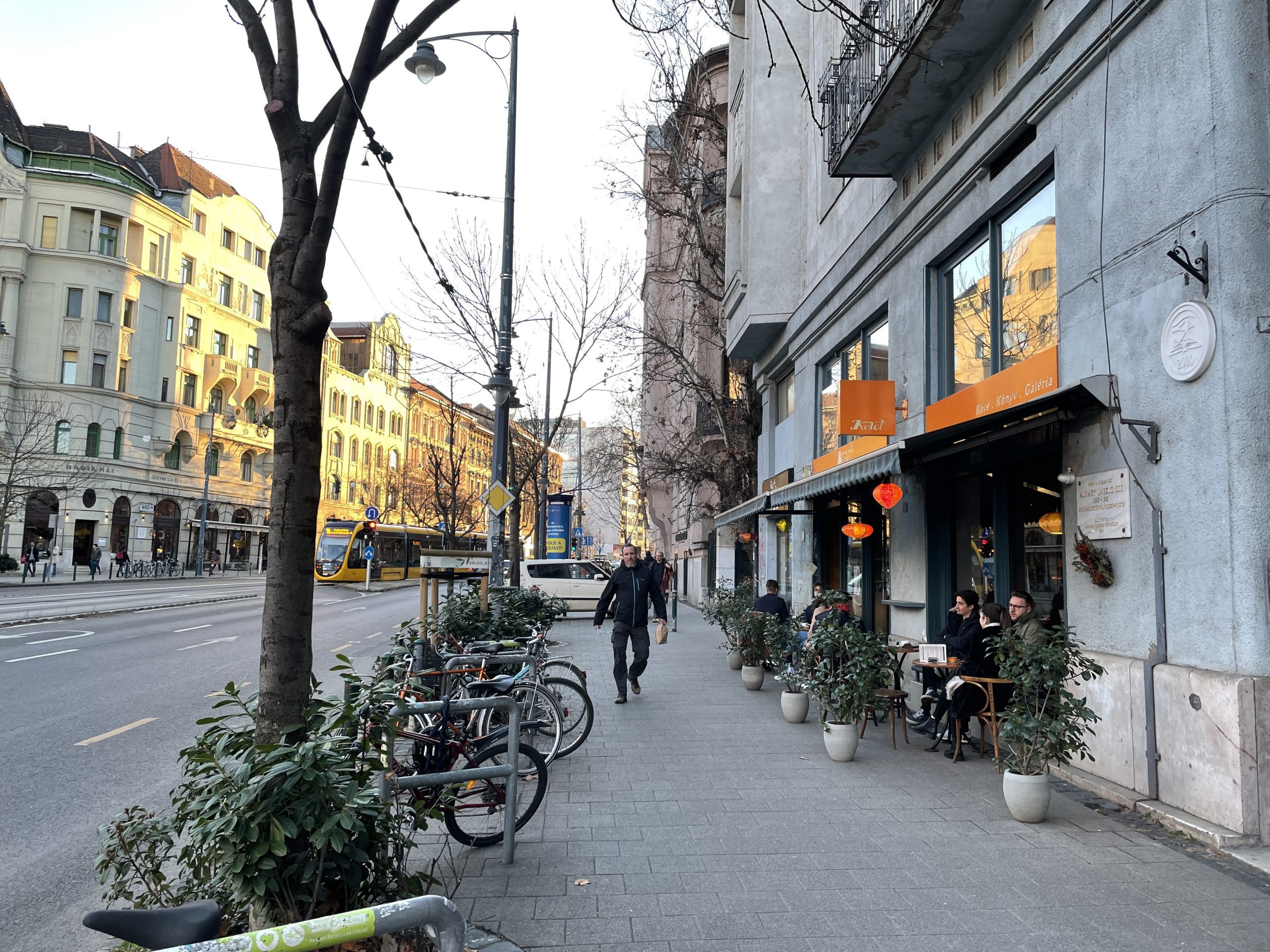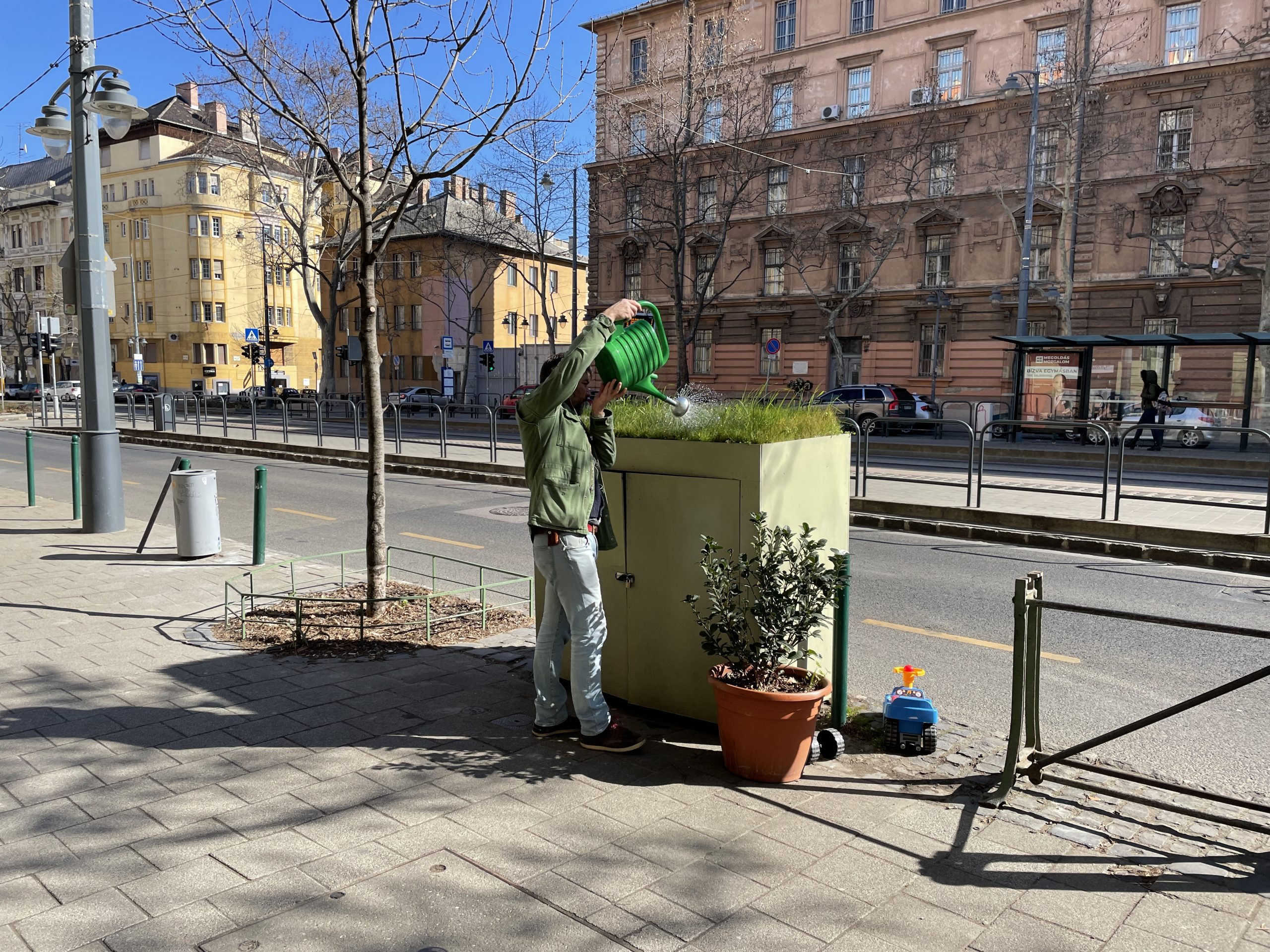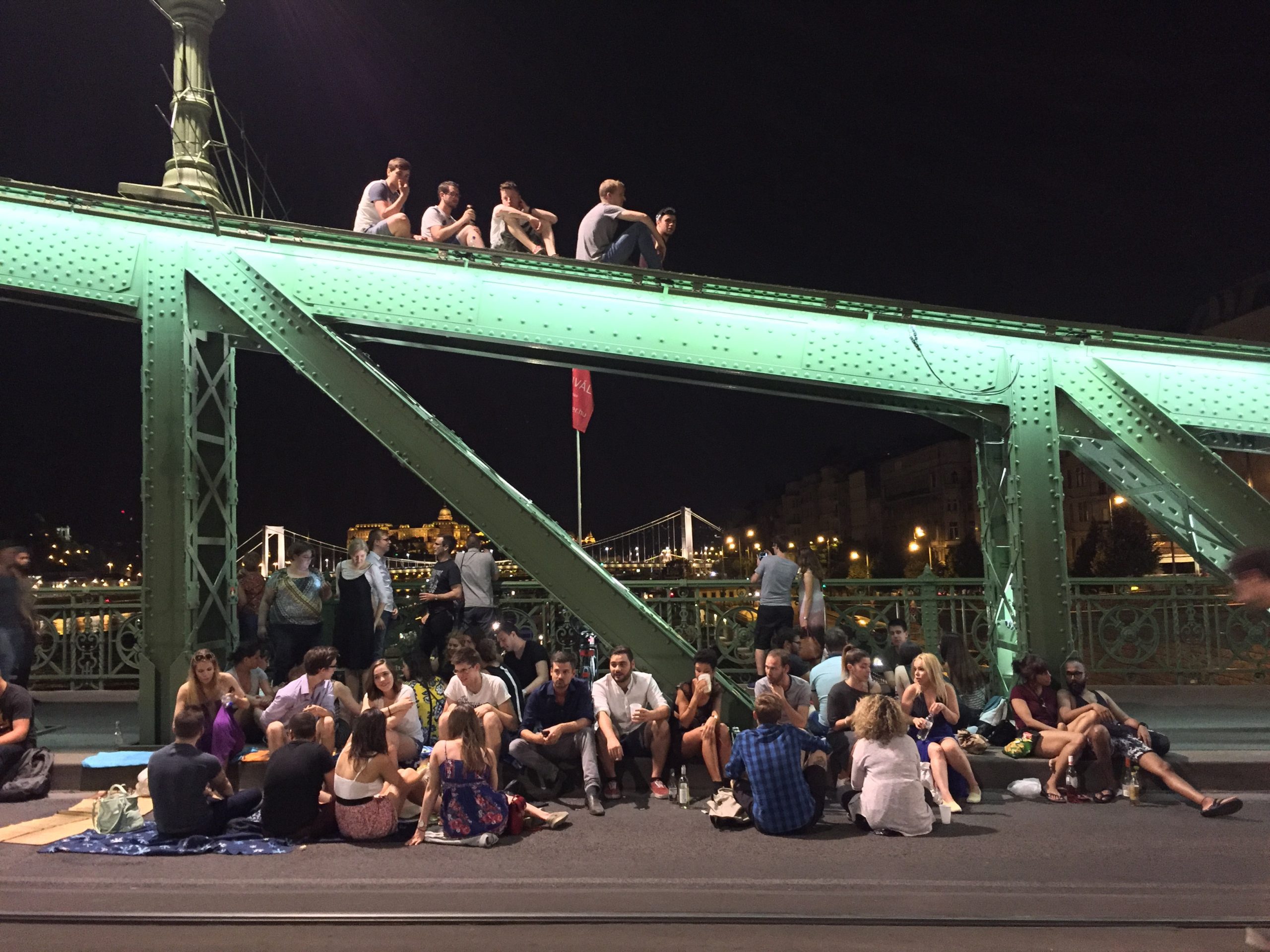CUP4Creativity is a project of the Budapest district of Újbuda, funded by the EU’s Urban Innovative Actions programme. The project builds on the district’s current dynamic as a new cultural centre, by generating new connections between cultural producers, artists, creatives, technology initiatives, businesses and residents. CUP4Creativity tackles a variety of challenges: on the one hand, in an effort to tackle (digital) loneliness in Újbuda, the project provides local residents with online and offline spaces to participate in cultural activities and the cultural life of the district. On the other hand, the project aims to further develop the cultural and technological ecosystems of Újbuda, encouraging synergies between local actors and enhancing the creativity of residents, entrepreneurs and community initiatives. In this article for CUP4Creativity, UIA expert Levente Polyák revisits the recent history of Budapest’s most dynamic cultural district and the policies and recollects the visions and policies that led to the development of this initiative.
The strategic transformation of Újbuda into a cultural centre
Until recently, the area of Bartók Béla Boulevard in Budapest was mainly considered as a residential district enjoying an easy access to Pest’s more central neighbourhoods as well as to the green slopes of Buda and the riverbank. This image of the area began to change in the mid-2000s when –inspired by the concepts of creative and cultural urban transformation – the Újbuda Municipality conceived a programme to develop the Bartók Béla Boulevard into a cultural quarter. The programme included the renovation of public spaces along the boulevard and a strategy to prioritise and subsidise the use of ground-floor commercial spaces by cultural and creative organisations.
The 2008 economic crisis interrupted the planned transformation process and left the area, similarly to other neighbourhoods in Budapest, with closed shops scattered around on the Boulevard and the side streets. The results of the strategy, however, became visible within a few years. Already in the early 2010s, a host of new coffee houses, restaurants and art galleries moved onto the Boulevard. A new municipal cultural centre opened on the corner of what used to be a crossing of two streets and was now upgraded into a square with seating options and a little park. To support the transformation process from the bottom-up, an umbrella organisation – the Bartók Boulevard Association – was established to bring together cultural operators in the area, synchronise and harmonise their programmes and strengthen the neighbourhood’s cultural brand.
This brand, in turn, attracted more cultural activities and venues. Besides its central location, beautiful tree-lined streets and mushrooming cultural and gastronomic venues, the Bartók Béla Boulevard area had another, less visible asset. The presence of some of Hungary’s biggest universities – the Budapest University of Technology and the natural and social sciences faculties of the Eötvös Loránd University of Sciences made the area popular among students. Spending years between the university facilities and their dormitories, many engineering and architecture students recognised the area as the centre of their Budapest experience. When the KÉK–Hungarian Contemporary Architecture Centre opened its gallery and co-working space on the Bartók Béla Boulevard in 2015 and began to connect and mobilise the local architecture and design scene, it became clear that the area has the highest concentration of architecture and design offices in Budapest. It is not a surprise that many university graduates opened their businesses in the area they knew most in the city.

With a distance of a decade and a half, the Bartók Béla Boulevard’s transformation process is widely seen as successful. The area has not only become one of the most popular areas in Budapest, but caught international attention as well. In 2019 and 2021, Újbuda was ranked by the readers and experts of Time Out magazine among the best neighbourhoods in the world. Visibility and attractiveness do not only have advantages though; they also carry the risks of gentrification and commercialisation.
Cultural gaps and the needs of the neighbourhood
As I cross the river towards the Buda side, I can see the gradual opening up of a splendid landscape: gently stretching out between the Gellért hill and the Danube river, the Bartók Boulevard’s urban fabric feels like the continuation of Pest’s lively inner city neighbourhoods, with trendy cafés, restaurants, pastry shops and boutiques populating the tree-lined avenue and its side streets. I’m heading to the gallery of the KÉK–Hungarian Contemporary Architecture Centre, an NGO engaged in improving architectural culture and broadening the public discourse about the built environment.
I am here to meet Rita Szerencsés, a design manager, social innovator and community organiser who helped in a research exploring cultural gaps and needs in the neighbourhood. We sit down near the gallery’s large shopwindows opening to the Boulevard, bringing its noise and movements into the inner space. “I wonder how well is Bartók doing after the boom,” she confesses. “There was a big hype, a big upturn, but what are the visitor numbers of the street now?” Rita is concerned about the natural life cycle of neighbourhoods that attract a lot of attention in a period, get overwhelmed and saturated and then go downhill. “Will Bartók Boulevard repeat what happened with Ráday Street and other cultural streets? Did this tendency already begin in this neighbourhood? Because I think that these places or streets need to be renewed from time to time,” she suggests.
Rita refers to Budapest neighbourhoods that went through various phases of a life cycle. Ráday Street in the Ferencváros district was one of the city’s first pedestrian streets with a once thriving art and literary life and its own cultural festivals. However, the street’s inertia towards commercialisation led towards its decline as a cultural destination. Király Street in Erzsébetváros, at the heart of Budapest’s nightlife centre began as a cultural district and design hub, before nightlife tourism took over the area, prompting seemingly irresolvable conflicts between partygoers and residents. In turn, Mikszáth Square that played an important role in the 1990s underground culture and then faded into mediocrity, has currently regained its stance due to the rebirth of cultural life in the Józsefváros district.

If “cultural’ neighbourhoods are in constant movement, where does Bartók Béla Boulevard stand in this cycle? In the late 2010s, with real estate prices skyrocketing in the district, it seemed that the area might have gone beyond its zenith. The arrival of Starbucks to Gellért Square – the square acting as the gate of the neighbourhood – rang the alarm for many protagonists of the area. There was a growing awareness of the relative fragility of the success of the neighbourhood’s transformation.
Another issue, often raised when discussing the shortcomings of the Bartók Boulevard is the cultural scene’s lack of connection with local residents. While the area attracts culture lovers from all across the city, many locals seem indifferent to the cultural offer provided by their neighbourhood. In 2017, the owner of a small venue was interviewed by the Kreatív online magazine. “Apart from a few exceptions, the people who live here don’t really feel like they own the square, they don’t want to look after it,” she complains. “I see signs of selfishness, indifference, metropolitan alienation. So we need a change of attitude, which is very difficult,” she concludes.
A more attractive neighbourhood: the municipality’s perspectives
After our discussion with Rita, I move deeper in the Boulevard’s life. I join Máté Ábrahám on the terrace of the cafeteria on Bartók Boulevard. Máté is the manager of the CUP4Creativity project. Working closely with deputy mayor for culture Richárd Barabás, Máté sees the challenges and opportunities of the local cultural scene from the perspective of the local municipality.
With its 150,000 inhabitants, Újbuda is the biggest of the 23 district municipalities that constitute the Budapest area. All these districts enjoy a high degree of autonomy: with their own elected mayor and city councils, district municipalities are responsible for most public planning and interventions in their territories, except for major mobility and infrastructure projects that are the competence of the central Budapest Municipality. In turn, districts have at their disposal a variety of tax revenues as well as some subsidies and redistributed income from the Budapest Municipality and the Hungarian state. This arrangement, while making it almost impossible to develop Budapest in an integrated way, often sets districts against each other in a competition to attract resources. Left to their own devices, district municipalities need to innovate constantly, in order to lure new residents and companies in their territories, together with their spending power and taxes paid.
Despite the manifest success of the Bartók Béla Cultural Quarter, the Újbuda municipality kept on investing resources in strengthening the local cultural and creative sectors. This ambition was partly fuelled by strong personal engagement: officers in the municipality’s cultural department and in Központ, the district’s cultural provider agency have not stopped looking for new, innovative ways to engage residents and create new cultural collaborations in the district.ű

Between 2016-2019, the Újbuda Municipality led the URBACT network Creative Spirits that brought together cities eager to upgrade their local ecosystem composed by creative and cultural actors to be able to attract (more) creative entrepreneurs and boost creative entrepreneurship in dedicated urban areas. The recommendations developed in the project, articulated in an Operational Implementation Framework, outlined the municipality’s ambition to make Újbuda the key creative district of Budapest. To fulfil this ambition, however, more resources were needed.
Culture for social cohesion: the CUP4Creativity project
The story of the CUP4Creativity project began with a group of innovators who approached the municipality with an idea. They envisioned a new platform to connect residents, cultural producers and tech entrepreneurs. The municipality embraced the idea, but the realisation of the idea needed external funding. Support by the EU’s Urban Innovative Actions programme brought Újbuda the possibility to build on its earlier achievements and reactivate the local partnerships already in place. Politicians, municipal officers and protagonists of the local cultural scene immediately saw in the project the opportunity to realise some of the ideas and plans envisioned in earlier projects and in ongoing discussions among local cultural operators.
Accommodating innovation from the outside and bringing together local protagonists for a project coordinated by the municipality is not without any difficulties: the innovators “arrived with very precise ideas and it took a long time to turn these ideas into a collective process,” recalls Máté. The encounter between a vision, a bureaucratic organisation and a broad partnership is never an easy marriage; it implies a process where the ideas and objectives are regularly renegotiated. As Máté recounts, it took a year to operationalise the vision: “the biggest achievement of the first year is that we have brought this dream a little bit down to reality. We have channelled local needs and local actors much more into it.”
To influence the trajectory of Újbuda’s urban transformation, it is essential to mitigate the impact of gentrification and commercialisation in the area by expanding cultural life beyond the Bartók Béla Boulevard’s surroundings and distributing better the district’s cultural resources in the broader Újbuda territory. In order to tackle social isolation and loneliness in the district, it is important to create easier access for residents to the neighbourhood’s cultural events and help them benefit more from the area’s rich cultural offer and become active contributors to this culture, rather than passive consumers. To enhance the embeddedness of cultural initiatives and local businesses in the area, it is necessary to help the cultural scene weave stronger connections with the tech sector, very present in the nearby Science Park and its surroundings but disconnected from the rest of the district and virtually invisible in its daily life. Finally, to help culture become the protagonist of broader social and economic transformation, a stronger local ecosystem needs to be built, with closer collaboration and denser networks among the protagonists of the district.
For these ambitions to be fulfilled, new offline and online spaces are needed. One of the key objectives of CUP4Creativity is the establishment of a new cultural institution, Adaptér (a wordplay connecting “adaptation” and “space”) to bring together art and technology in a user-friendly manner. This new institution will act as an entrance point to the local cultural and technology ecosystems, positioned as a hub in a broader network of spaces, a kind of a “decentralised FabLab” at the neighbourhood scale. Equipped with the latest technological infrastructure, Adaptér will offer its users access to a variety of tools and instruments and will host trainings, workshops as well as cultural events, exhibitions and social gatherings. Adaptér is conceived together with local cultural and tech organisations to become a venue that helps residents and businesses go through the phases of inspiration, education and creation, bringing culture and creativity into their daily lives.
The other key output of CUP4Creativity is an online platform and an offline programming framework called INSERT. The online platform will serve as a digital space creating links between individuals and local cultural and tech organisations and thus increasing interactions among local actors and developing a more cohesive cultural ecosystem. The platform will be supported by a programming framework, thematically connected to the district’s long-term cultural development strategy and serving as a scheme to “organise online and offline activities into a narrative framework,” explains Máté.

There are challenges of all kinds lying ahead of the CUP4Creativity project. The risk-averse municipal system, to start with, has in-built obstacles when trying to manage innovative processes. The Covid-19 pandemic made public events, workshops and physical meetings – and therefore, the chemistry of collaboration – difficult. Rising construction costs make the renovation of spaces designated for Adaptér and other venues of the district’s new institutional tissue more expensive and the procurement processes leading to the selection of contractors more lengthy. Prolonged construction and development processes risk to alienate partners whose engagement can be weakened if they don’t see the results and impact of their work. And if these were not enough, the national elections scheduled for April have created a peculiar political situation with a lot of media pressure and hostility towards municipalities and their projects.
The great advantage of CUP4Creativity is that it is not built from scratch. It is the logical next step in a long-term cultural development process, relying on already sampled partnerships that have not yet accomplished their potential. For Adaptér and INSERT are only containers and connectors that have to be filled with energy and content by local initiatives. The success of CUP4Creativity depends largely on the new institutions’ capacity to accommodate ideas and needs while developing a distinct profile; and to channel the energies of the partnership into well-defined processes that effectively engage the broader Újbuda community.

